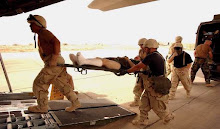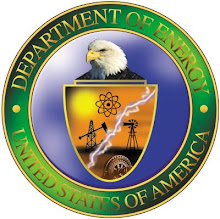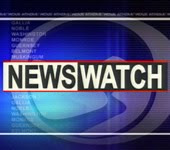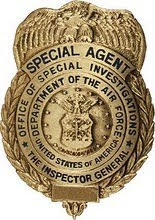By Steve Hammons
A couple of weeks ago, a small startup company involved in forward-leaning research held an online Q&A session to discuss their activities. The company, To The Stars Academy of Arts and Science (TTSA), gained recent attention for their involvement in research into U.S. Navy encounters with “unidentified aerial phenomena (UAP).”
One of the company’s advisers, Christopher Mellon, took questions from participants on Twitter. Mellon previously held the position of U.S. deputy assistant secretary of defense for intelligence. Of the total questions and answers, 25 were later published on TTSA’s website.
For some people, both the questions and answers probably trigger increased curiosity, a closer look and a deeper thoughtfulness about what could be involved.
Further analysis of some of the questions and answers might improve our perspectives. And analyzing some points a bit more could also provide some helpful acclimation and orientation, and possible insight.
Below are seven of the verbatim Qs and As, or sections of them, with a brief analysis of some aspects that seem relevant.
TELLING THE STORY
Q #7: Reporter George Knapp [award-winning investigative journalist, KLAS-TV News, CBS8, Las Vegas] has speculated there are other, better funded UAP programs that should come to light. Word is about 4 of them in existence for many decades. Do you feel confident we will learn about more programs in the near future?
A: I’m not sure what programs he is referring to but I see no evidence DoD is about to release info about new, undisclosed, classified programs on this topic. We applaud DoD’s recent openness regarding the videos however we would like to see greater transparency going forward. All of us at TTSA would like to see greater government transparency.
Analysis: According to many credible reports, during World War II and in the post-war late-1940s and 1950s, the U.S. defense community became aware of seemingly very unusual aerial phenomena. So, there appear to have most likely been seven decades of research into the situation.
Many researchers looking into this overall topic claim that there is significant evidence, as well as notable circumstantial indications, pointing to robust U.S. activities in this area.
Q #9: How would the team respond to criticism of a small group claiming TTSA is positioning #UAP as a potential threat to create a "defense" narrative around the topic? This seems simply a way to engage those who only respond to something if they think it’s a POTENTIAL threat.
A: We were motivated by the lack of support for pilots concerned about threats to (them) from these aircraft, from mid-air collisions, or possibly worse.
Analysis: The framing of a narrative (which is basically a story) can be very important. What actually is the true story? Or, are there many sides, elements and perspectives to the story or multiple stories? Narratives and storytelling can be used in various ways, with various degrees of accuracy and completeness.
On this particular topic, maybe we still don’t know, understand or comprehend various aspects of the story. Yet, maybe there is enough information somewhere to indicate that the situation is related to a defense threat of some kind.
Q #11: Thanks for getting credible mainstream outlets to cover this (NYT, CNN, WaPo, etc.)! My question is does appearing on disinformation programs like Glenn Beck/Hannity do more hurt than good?
A: I don’t regard the UAP issue as a partisan topic, and Lue [Luis Elizondo, TTSA director of government services and programs] and I do interviews for all manner of press. I have independently written about my concerns and distaste for excessive partisanship and the problems it poses
Analysis: The American free press includes credible and professional news organizations as well as media outlets with lesser credibility. In recent decades the media landscape and ecosystem have changed due to the emergence of the internet, new online media, as well as developments in TV and movies.
The Merriam-Webster Dictionary defines the word “disinformation” as the following: “false information deliberately and often covertly spread (as by the planting of rumors) in order to influence public opinion or obscure the truth.”
INTERNATIONAL, GLOBAL SITUATION
Q #12: Has there been any tangible progress on the international stage? What kind of progress, do you believe, has been achieved by other countries in tracking, investigating, and replicating these phenomena? And, lastly, are you seeing positive momentum?
A: There is growing international interest. In 2018, for example, the Chinese government-funded an international UAP symposium focused on high tech issues. Lue recently returned from a visit to Latin America that will feature prominently in an upcoming episode of #UNIDENTIFIED [A&E History Channel docu-series “Unidentified: Inside America's UFO Investigation”].
Analysis: The global nature of the situation being researched seems significant. With the various international tensions and humanitarian challenges around the world, increased cooperation on this particular topic could be helpful.
In an Oct. 13, 2019, article on The Hill website, “3 reasons to investigate the US Navy UFO incidents,” former State Department analyst Marik von Rennenkampff wrote that, “Given the anti-democratic and authoritarian inclinations of some major world powers, it is imperative that such [advanced aerospace] capabilities fall into the ‘right’ (i.e., democratic) hands.” He added, “In the event that such capability exists, mere knowledge thereof should prompt a fundamental shift away from humanity’s baser priorities in favor of loftier, nobler objectives.”
Q #13: If @TTSAcademy could only accomplish one goal (in my opinion you've already accomplished a great deal) - What would the most important thing that comes out of all this?
A: Great question! If the existence of intelligent extraterrestrial life is established, it will prompt the biggest transformation in humanity’s outlook since Copernicus.
Analysis: The natural and logical implications of various research in this area do seem to point to very significant possible or probable developments. As Mellon notes, this would result in a transformation for humanity.
Our basic understanding of certain aspects of science, spirituality, Nature, the Universe and ourselves could change somewhat significantly.
Q #14: Can you address how the understanding/realization of the UAP being a real phenomenon has changed you and other members of TTSA at a personal level?
A: Wow, interesting question. I’m proud of what we have achieved in a short period of time but also keenly aware that the ramifications are immense and potentially very concerning. The more concrete the issue becomes the more weighty it becomes.
Analysis: Mellon notes that he and his TTSA colleagues are, “also keenly aware that the ramifications are immense and potentially very concerning. The more concrete the issue becomes the more weighty it becomes.”
This seemingly will increasingly also be the case for more and more Americans and people around the world.
Q #16: In May 2016, Leslie Kean [author, journalist, researcher] asked: "Are you certain there is no government cover-up?" You answered, "It’s impossible to prove the negative, so all I can say is that I never saw any evidence of official interest in UAPs."
A: Uncle Sam has a big basement and rummaging around there can turn up all manner of things. However, I think the central problem at the moment is the lack of government interest and effort to get to the bottom of the issue.
Analysis: (Same as analysis on question #7 above related to journalist George Knapp) According to many credible reports, during World War II and in the post-war late-1940s and 1950s, the U.S. defense community became aware of seemingly very unusual aerial phenomena. So, there appear to have most likely been seven decades of research into the situation.
Many researchers looking into this overall topic claim that there is significant evidence, as well as notable circumstantial indications, pointing to robust U.S. activities in this area.
To read the full 25-question Q&A, visit the TTSA site here.
(Related articles “Storytelling affects human biology, beliefs, behavior” and “Reagan’s 1987 UN speech on ‘alien threat’ resonates now” are posted on the CultureReady blog, Defense Language and National Security Education Office, Office of the Undersecretary of Defense for Personnel and Readiness, U.S. Department of Defense.)
Friday, June 5, 2020
Analysis: Research company involved with UFOs opens up about activities
Subscribe to:
Comments (Atom)



































































































































































































